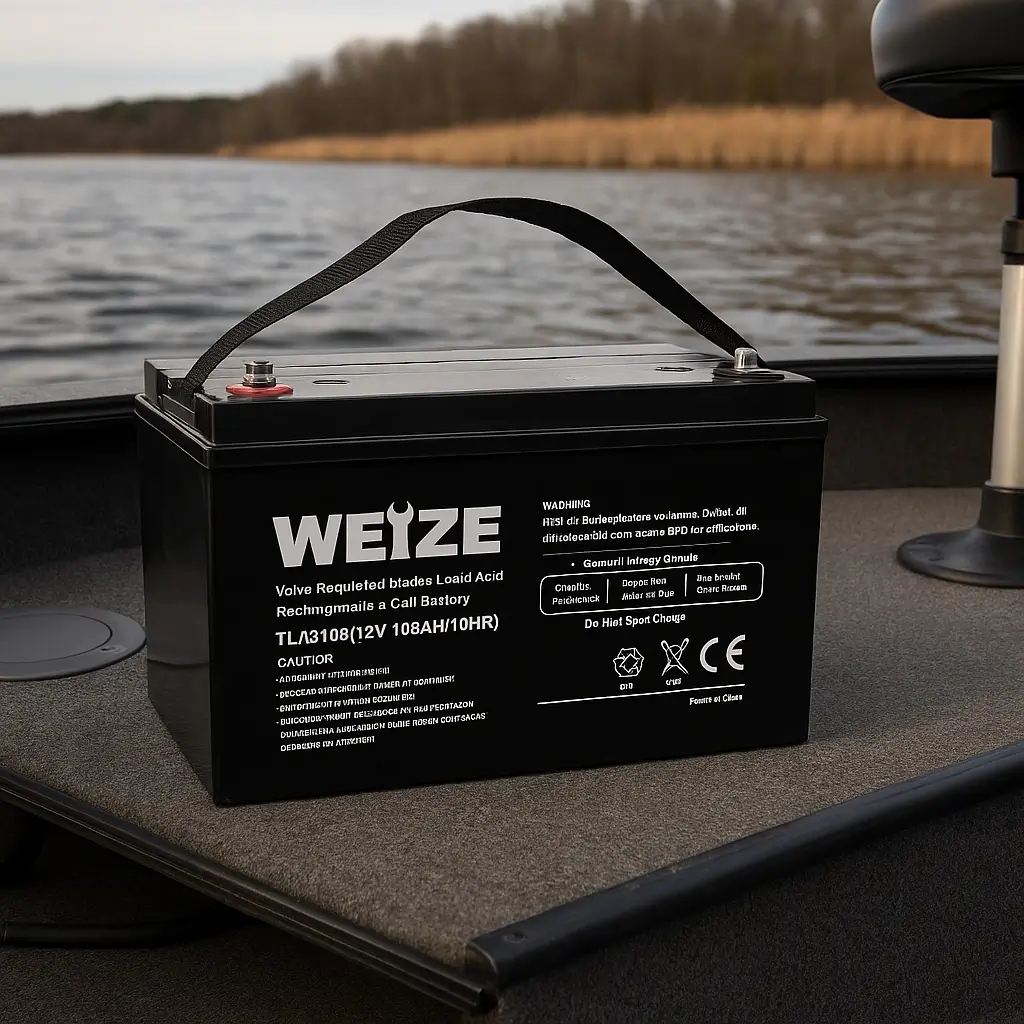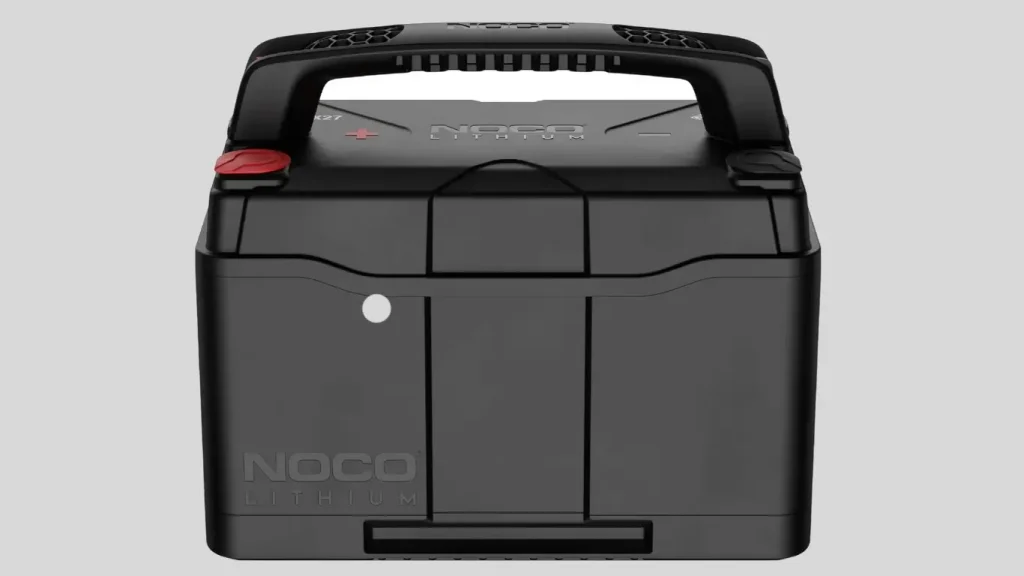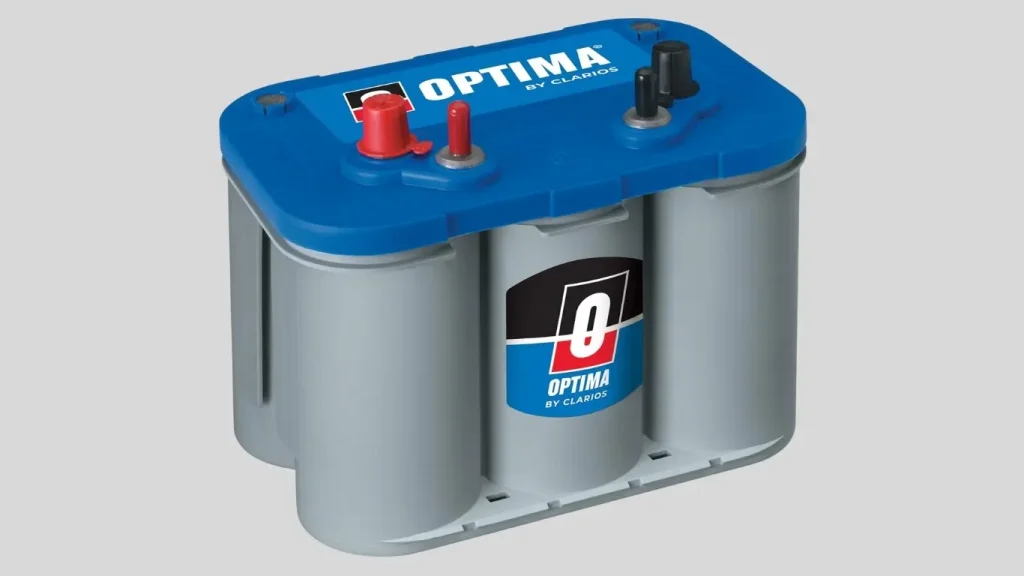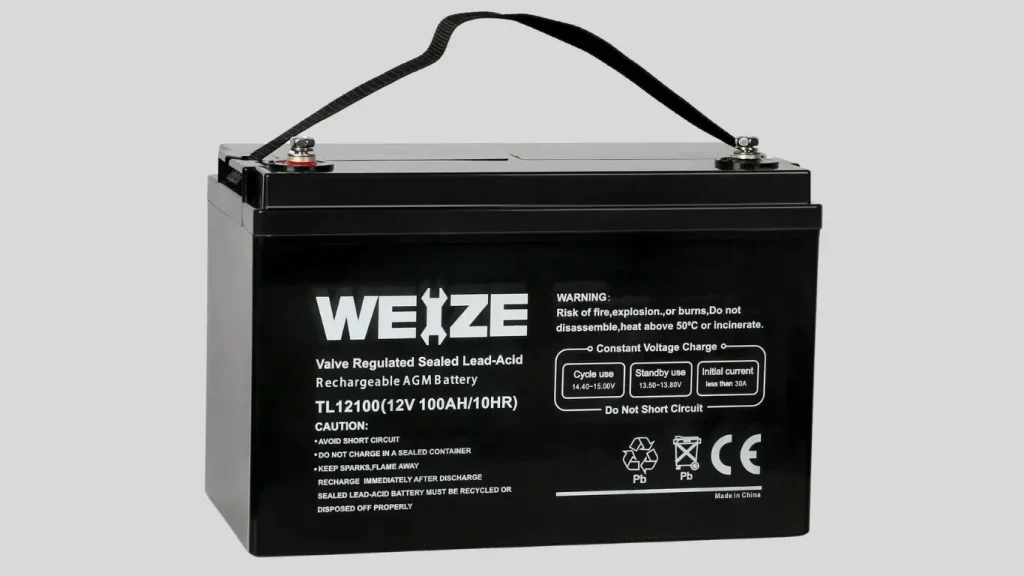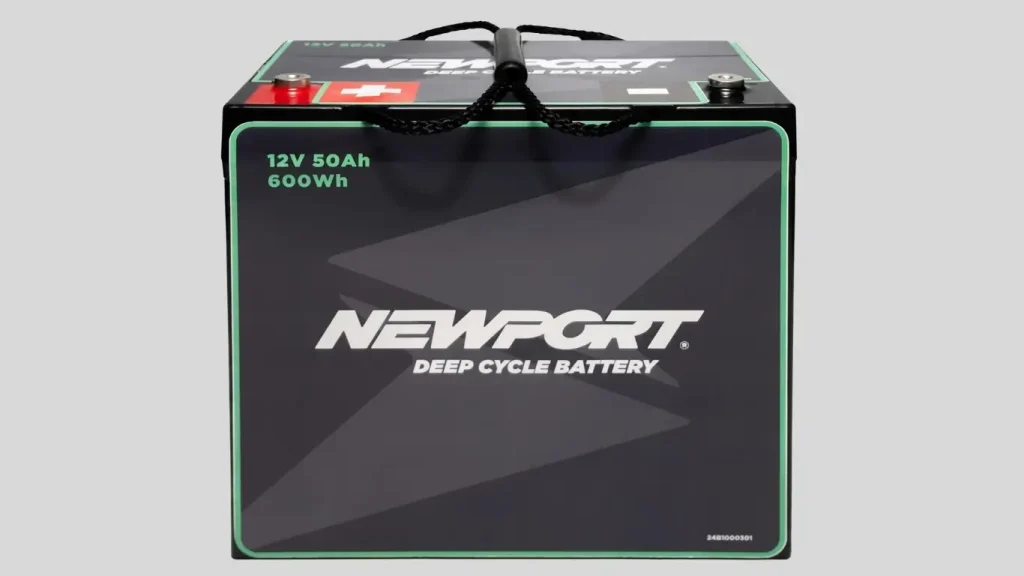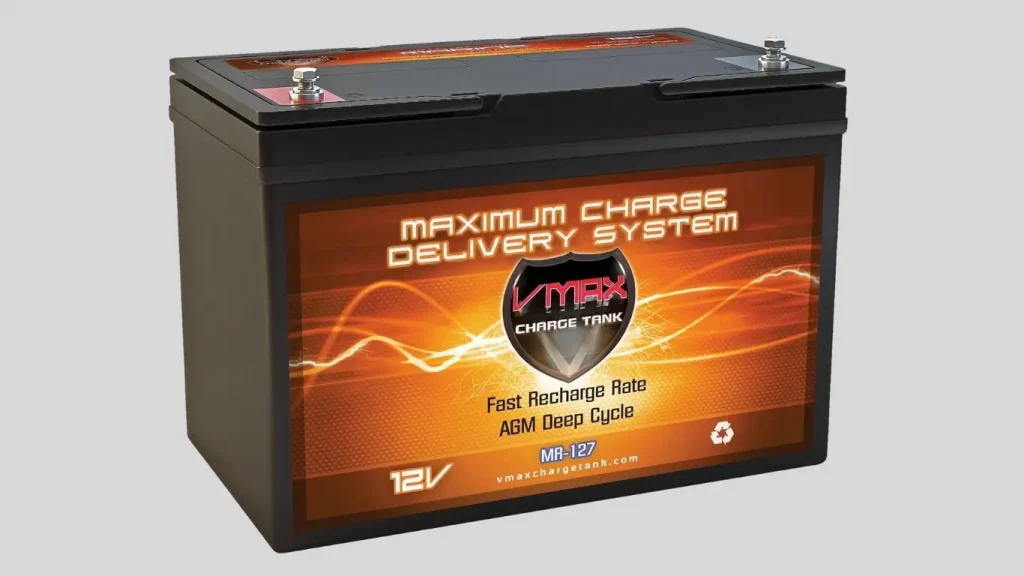The product recommendations on our website are selected by our editorial team based on independent research. If you make a purchase through the links on our site, we may earn a small commission. Learn more
When you’re out on the water, your trolling motor battery isn’t just another piece of gear—it’s the lifeline that keeps you moving quietly and smoothly. Whether you’re chasing bass in shallow lakes or trolling saltwater flats, choosing the right battery ensures consistent performance, long-lasting power, and fewer headaches during your trip.
In this guide, we’ll break down the best trolling motor batteries, covering everything from traditional AGM to modern lithium-ion options, so you can pick the perfect match for your boat and fishing style.
Best Trolling Motor Battery We Will Cover Today
1.NOCO Lithium NLX27
2.OPTIMA BlueTop D34M
3.Weize Deep Cycle AGM
4.Newport 12V 50Ah
5.VMAX MR127
Best Deep Cycle Battery For Trolling Motor Reviews!
1.NOCO Lithium NLX27
Price: $ 1,015.44 | Review: 4.9 | Weight: 33.22 Pounds
The NOCO NLX27 is a dual-purpose lithium battery that does both the job of starting your engine and powering your gear without breaking a sweat. With 100Ah of usable energy and a volt-level that holds strong under load, it’s built to easily replace AGM or lead-acid setups. When you turn the key, it gives you serious starting power; then it backs that up with deep-cycle endurance so your trolling motor, lights, or fridge won’t wobble when things get busy.
It charges way quicker than older batteries, which means less downtime between trips. Its built-in management system watches over temperature, voltage, and current so you’re protected automatically. Plus, the battery is lighter and more durable than lead-acid ones—less hassle carrying it, less worry about water or corrosion, and more reliability over many seasons.
Pros:
- Excellent cranking power + deep-cycle performance in one
- Lighter and longer lasting than traditional lead-acid batteries
- Fast charging time
- Built-in safety and cell management
- Durable construction suited to tough environments
Cons:
- Initial cost is much higher than AGM/flooded options
- Needs a compatible lithium charger to get full benefits
- Cold weather can still reduce output or slow charging
- Complexity means repairs can be more selective and costly
2.OPTIMA BlueTop D34M
Price: $ 329.99 | Review: 4.3 | Weight: 43.5 Pounds
The OPTIMA BlueTop D34M is one of the most popular dual-purpose AGM marine batteries, trusted by anglers and boaters who need both strong starting power and steady deep-cycle performance. Built with OPTIMA’s unique SpiralCell design, it handles vibration better than most batteries on the market, making it a reliable choice for rough waters or long days on the lake.
With plenty of cold-cranking amps, it fires up your engine even in tough conditions, while still having enough juice to run your trolling motor, fish finder, or onboard electronics. Because it’s an AGM sealed battery, it’s completely maintenance-free—no spills, no topping off water—just charge it and go. Another big plus is its quick recharge time, which means you spend less time on the charger and more time fishing.
That said, it’s heavier than modern lithium batteries and doesn’t offer the same deep discharge capacity or cycle life. If you regularly push your trolling motor hard, lithium may serve you better. But for anglers looking for a tough, proven, and dependable marine battery for trolling motors and starting power, the BlueTop D34M is a solid choice.
Pros
- Strong starting power with high cold-cranking amps
- Dual-purpose: works as both a starter and deep-cycle battery
- SpiralCell design resists vibration for longer life
- Maintenance-free sealed AGM technology
- Recharges faster than standard lead-acid batteries
Cons
- Heavier and bulkier than lithium alternatives
- Limited deep discharge capacity compared to lithium or pure deep-cycle batteries
- Higher upfront cost than basic flooded lead-acid models
- Not ideal for anglers who demand all-day trolling at high thrust
3.Weize Deep Cycle AGM 12 Volt 100Ah Battery
Price: $ 169.99 | Review: 4.5 | Weight: 57 Pounds
The Weize Deep Cycle AGM 12V 100Ah battery is a solid budget-friendly option if you need a reliable deep-cycle battery for your trolling motor, marine gear, solar setup, or RV. It doesn’t have the flash of lithium types, but for those who want steady performance, less fuss, and a good price, it delivers more than you might expect.
What it does well: It’s built with AGM sealed lead-acid tech, so no worries about acid leaks or topping off water. Weize touts a low self-discharge rate (around 1-3% per month), which means you can let it sit for a while and it won’t drain fast. The max discharge current is high—about 1150A (for 5 seconds)—so it can handle a good burst of demand, which helps if your motor pulls hard, or you have accessories. It’s also made to operate over a wide temperature range, so it works even in colder or warmer conditions.
Where it falls short: Because it’s AGM lead-acid, it’s heavy—moving it around or fitting it in tight spaces can be painful. Its usable capacity is less than what a lithium battery can safely give (you’ll want to avoid deep discharges for AGM to protect lifespan). The warranty is just 1 year, so long-term protection is limited. Also, charging times and efficiency are lower than what you get with lithium.
Pros:
- Sealed AGM design: no leaks, low maintenance
- Low self-discharge: holds charge well during storage
- High burst current: good for sudden load demands
- Operates across a wide temperature range
- Strong price per amp-hour compared to many AGM batteries
Cons:
- Heavy and bulky — less ideal for small boats or portability
- Limited usable capacity if you want to preserve battery life
- Slower charging and less efficient compared to lithium batteries
- Short warranty period
- Over many cycles, performance declines faster than high-end lithium batteries
4.Newport 12V 50Ah Deep Cycle Marine Battery
Price: $ 139.99 | Review: 4.5 | Weight: 30 Pounds
The Newport 12V 50Ah Deep Cycle Marine Battery is a sealed-AGM (absorbed glass mat) design aimed at small boats, trolling motors, or powering marine electronics. At about 30 lbs, it strikes a balance between portability and power — light enough to move, but still with enough juice for longer fishing sessions or moderate accessories. Its 50Ah capacity delivers a decent run time in everyday use, and the sealed design means it’s spill-proof and relatively low maintenance, which angler friendly. The housing is built tough, and it’s designed to handle vibration, exposure to marine conditions, and the usual wear and tear of days on the water.
If you push the battery hard (high speed / high thrust), you’ll notice its limits — you can’t expect the same runtime or performance as larger capacity or lithium batteries. But for what it’s made for — moderate trolling, lights, fish finders, etc. — it does its job well.
Pros
- 50Ah is enough for many mid-day trips: trolling motor + basic electronics
- Sealed AGM design: no leaks, low maintenance
- Vibration resistance and rugged build suitable for marine conditions
- Relatively lightweight (for an AGM) to make installation & handling easier
- Decent value for boaters who want reliability without going lithium
Cons
- Heavier and bulkier compared to lithium batteries of similar capacity
- Runtime drops fast under heavier load or long high-thrust use
- Longer charging times vs lithium
- AGM batteries typically degrade more over time (if deeply discharged often)
- Higher upfront cost than basic flooded lead-acid batteries
5.VMAX MR127
Price: $ 269.96 | Review: 4.5 | Weight: 68 Pounds
The VMAX MR127-100 is a serious deep-cycle AGM battery built for continuous marine or trolling motor use. With a full 100Ah capacity at 12 volts, it delivers solid performance for longer trips or when running accessories like fish finders, lights, or livewells. It’s heavy duty — made with rugged plates and thick internal construction to resist vibration and demanding loads. Maintenance-free design means you won’t need to worry about topping up water or dealing with spills. It fits standard battery boxes and is popular among anglers who want reliable power without going lithium, especially if weight is less of an issue.
It’s not perfect — because it’s AGM, it’s heavier and bulkier than lithium. Deep discharges will wear it down faster, and its rate of self-discharge and charging speed are less forgiving than newer lithium options. But if you’re outfitting a solid bass boat, pontoons, or similarly sized craft and want a battery that can take repeated use, the MR127 is up to the task.
Pros
- High capacity (100Ah) gives good runtime for trolling motors + accessories
- Rugged build and durable internal components — handles vibration and hard use well
- Maintenance-free sealed AGM — no watering or spillage concerns
- Fits in Group 27 battery size — drop-in for many setups
- Strong reserve capacity and pulse current for short bursts
Cons
- Heavy — makes it harder to carry, install, or reposition
- Slower charging compared to lithium batteries
- Less usable life if frequently deeply discharged
- Bulky size means space constraints in smaller boats or kayaks
- Higher weight also impacts how boats perform (balance, launch effort, etc.)
Buying Guide: How to Choose the Right Trolling Motor Battery
Picking the best trolling motor battery isn’t just about grabbing the biggest one you can find. It’s about matching the right battery to your boat, your motor, and your fishing style. Here’s a full breakdown of what you should consider before making a decision.
1. Battery Types
- Flooded Lead-Acid (Wet Cell): These are the most affordable and widely available. They work fine for casual anglers but require maintenance and can spill if tipped. They’re also heavier and usually have a shorter lifespan.
- AGM (Absorbed Glass Mat): A sealed, maintenance-free version of lead-acid that’s tougher against vibration and easier to handle. They cost more but are a dependable choice for anglers who fish often.
- Lithium (LiFePO₄): The premium option. Lightweight, long-lasting, and able to discharge more deeply. They cost more upfront but provide better performance, faster charging, and thousands of charge cycles. Perfect for serious anglers or kayak fishermen who need to save weight.
2. Voltage
Your motor’s voltage requirement determines what battery you need.
- Small motors usually run on 12V.
- More powerful motors may need 24V or 36V systems, which means using multiple batteries in series or a dedicated higher-voltage lithium battery.
Always match the voltage to your trolling motor or you risk poor performance or damage.
3. Amp-Hours (Ah) & Runtime
The higher the amp-hour rating, the longer your battery will last on the water. For example:
- 50Ah might power a motor for a few hours.
- 100Ah can give you all-day performance at moderate speeds.
Keep in mind that traditional lead-acid batteries shouldn’t be drained below 50% regularly, while lithium batteries can safely use 80-100% of their capacity.
4. Thrust & Motor Load
Bigger trolling motors with higher thrust levels pull more current, especially at top speeds or in strong wind and current. If you run your motor at full throttle often, you’ll need a larger battery or even a lithium upgrade to keep up.
5. Size & Weight
Batteries come in standard group sizes (24, 27, 31, etc.). Always check that the one you buy fits your battery compartment.
- Lead-acid and AGM batteries are heavy and can weigh down smaller boats.
- Lithium batteries are much lighter and easier to transport, which is a huge benefit for kayaks and jon boats.
6. Durability & Maintenance
- Lead-acid wet cells need regular maintenance (checking fluid levels, cleaning terminals).
- AGM and lithium are sealed, spill-proof, and vibration-resistant, making them better for rough waters and saltwater conditions.
- Look for rugged casings, corrosion-resistant terminals, and safety features like built-in protection against overcharging.
7. Charging
Always use the right charger for your battery type.
- Flooded and AGM batteries use traditional marine chargers.
- Lithium batteries require a lithium-compatible smart charger for safe, fast, and full charging.
Proper charging habits will extend your battery life — don’t let it sit discharged for too long.
8. Fishing Environment
- Cold weather: Lead-acid batteries lose performance in low temperatures, while lithium holds up better but may have charging restrictions in extreme cold.
- Saltwater fishing: Look for sealed, marine-grade batteries that resist corrosion and vibration.
9. Warranty & Long-Term Value
While lead-acid and AGM batteries typically last 3–5 years, lithium batteries can last 8–10 years or more. The upfront cost is higher, but the long-term value often makes lithium the cheaper option over time. A strong warranty also adds peace of mind.
10. Practical Tips
- Always follow your trolling motor manufacturer’s recommendations.
- If you run multiple batteries, make sure they are the same type and age for best performance.
- Plan for extra capacity to handle wind, current, and accessories like fish finders or lights.
- For kayaks and smaller boats, prioritize lighter batteries to avoid dragging your performance down.
FAQs
Q1. How long does a trolling motor battery last on the water?
It depends on amp-hours and motor thrust. A 100Ah battery can often run 4–6 hours at moderate speed.
Q2. Can I use a car battery for my trolling motor?
No. Car batteries are designed for quick bursts of power, not deep-cycle discharge like trolling motors require.
Q3. How long do trolling motor batteries last overall?
AGM: 3–5 years. Lithium: 8–10+ years with proper care.
Q4. Do I need a special charger for lithium batteries?
Yes, use a lithium-compatible smart charger for best performance and safety.
Final Words
Your trolling motor battery can make or break your fishing day. Choosing the right one depends on your budget, motor setup, and how often you fish. If you want affordable reliability, AGM batteries like the Vmax or Optima are great choices. But if you want lightweight, long-lasting power for serious fishing, lithium batteries like Battle Born or Dakota Lithium are worth the investment. With the right battery, you’ll fish longer, stress less, and enjoy smoother days on the water
- This battery box / power center contains easy access external battery terminals that allow trolling motor leads and charger leads to be connected to the battery posts without opening the box
- Protects your battery (battery not included) on a small boat, transom application (boats that do not have battery compartments)
- Built-in, push button battery meter with 4 LEDs displays current “state of charge”
- Two 12-volt accessory plugs
- 60A resettable circuit breaker connected to top
- EXTERNAL BATTERY PORTS - Safely and easily connect your trolling motor or accessory to the battery ports without opening the box.
- DUAL INTEGRATED CIRCUIT BREAKERS - Integrated with 10 Amp and 60 Amp circuit breakers to protect your trolling motor and other accessories from electrical damage.
- DIRECT USB CHARGER AND ACCESSORY PORT - Provides one USB Charger and one 12V accessory port for convenient connection of various DC accessories.
- PRODUCT DIMENSIONS: 17 x 12 x 10 Inch, Fits Group 24 & 27 batteries, LED meter measures battery charge level (battery not included), Non-slip rubberized feet keep your battery box in place.
